- Joined
- Jul 2, 2014
- Messages
- 7,594
I don't really know that much about #4 way oil. My 13x40 lathe manual said to use Vactra #2, so I did, and it seems fine, but I have nothing else to compare it to other than oils for different applications.
Can I get an enlargement of your QCTP rack. I only have one row and Ive been told its excessive. LOL I like to not have to re set tools and zeros in the DRONot adding anything, just what I started with for tooling and other accessories and what have been added over the years. You'll get the bug and will add more tooling as time goes on. It can get obsessive buying more tools for your tools!
Really nice convenience is a QCTP and a variety of tool holders. I use a lot of carbide inserted tool holders; many options out there but a decent start is the 1/2" triangular sets of 5 different holders for around $30-$40. You'll likely find in actual use you don't use all 5.
HSS cut off T-shaped or double angled sides for parting. The QCTP kits usually include this holder.
Drill chuck for the tail stock and some center drills.
Live center for the tail stock.
Some 3/8" and 1/2" HSS blanks for turning, threading, etc.
Micrometer and/or dial caliper for checking diameters.
Dial indicator and mag base for checking run out (4-jaw set up) and/or checking the Z-position when set to the end of the carriage.
Test indicator for checking run-out also, though a 0-1" will do the same thing.
Center gauge for setting up your threading tool.
Chip brush (and tweezers).
Cutting fluid, I prefer non-sulfur based to keep the stink down.
Some luxury items are a scissor type knurling tool, works soooo much better than the bump style in my experience.
Telescoping gauges for checking bores/inside diameters
DRO
Taper attachment if available.
Collet chuck/collets - collets are great! I have one lathe that's set up with a collet chuck and another with a set-tru 3-jaw chuck. Collets should be very accurate for staying on center if removing work from the lathe for a secondary operation, then returning to the lathe. Plus, they don't mar the surface of your work as easily as a really tight 3-jaw chuck.
Dedicated roll-away for your lathe tooling. Mine has all of the collets, spiders, tool bits, measuring tools, dedicated drill bits, etc. for quick use.
Optivisor for close up looking at work. I wear glasses with bifocals and catch myself peeking over my glasses for a better look. Use a magnifier (not very ofter), but do have a pair of safety glasses on the head stock for protection if peeking over the glasses.
More and more tool holders. I have around 35 on one lathe and 15 on the other. It's really convenient to switch between a triangular bit to a D diamond bit to a W bit, etc. without swapping tools in the tool holders and resetting center.
Some photos attached of my QCTP holders, tail stock tooling set up and HF roll-around tool rack dedicated to the G0709 lathe. Yes, I have gone to excess on a number of things. I'm sure you'll come up with better ways to organize your accumulation with WILL happen once you jump in! Enjoy the adventure!
Bruce
View attachment 245977View attachment 245978View attachment 245979View attachment 245980View attachment 245981View attachment 245982View attachment 245983View attachment 245984
Hi TakeDeadAim,Can I get an enlargement of your QCTP rack. I only have one row and Ive been told its excessive. LOL I like to not have to re set tools and zeros in the DRO
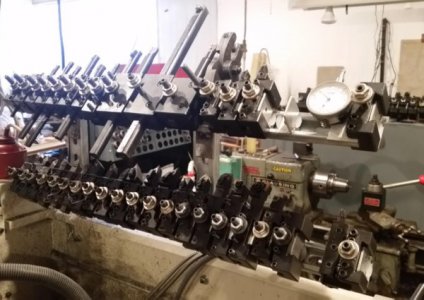
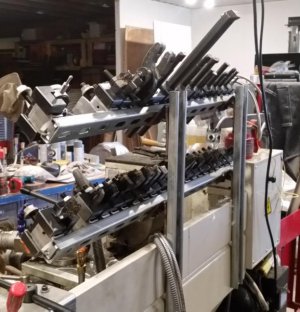
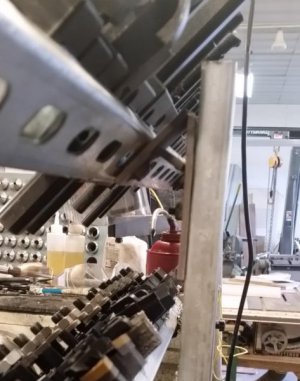
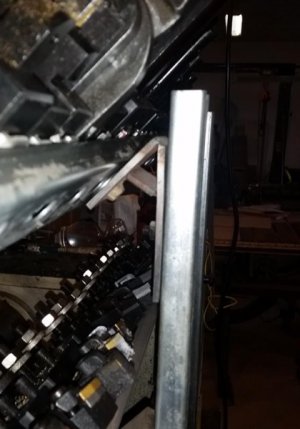
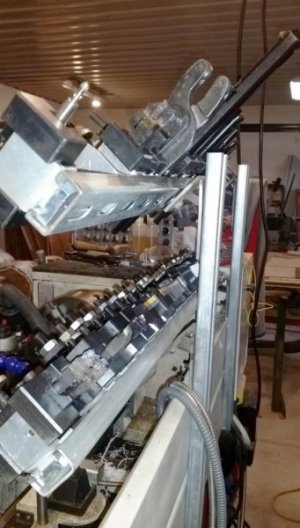
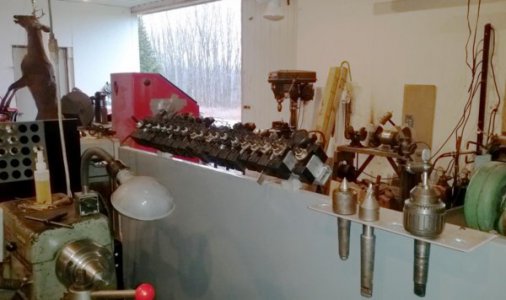
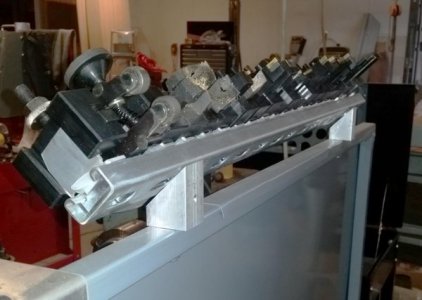
A stand can be rock solid, then the lathe bed itself is used for leveling and adjusting with shims or whatever between lathe and stand.The lathe must be bolted to a bench or stand, do not over build the stand. Lathes are made to be adjusted to cut straight, this is accomplished by the head and tail of the casting being the supporting structure. If the stand is made too stiff the head and tail of the casting become one solid unit and leveling and dialing in for a true cut over parts in excess of say 6" becomes difficult. If you look at the stands sold for these lathes it is really two cabinets with a piece of sheet metal between. Your design should emulate this.
